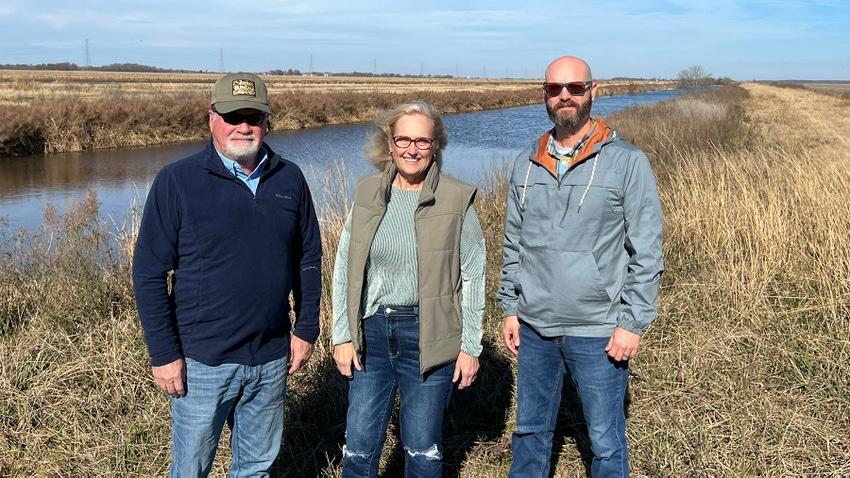
The March 8, 2024 Delta Farm Press issue features several stories on tailwater reclamation.
Since the beginning of time, farmers in the Midsouth have been more concerned about getting water off their fields than catching it and reusing it. However, water recovery systems have been in place for decades.
Usually ponds or sumps at the end of a field or the farm are used to push water back onto the crop in times of drought as needed for the crop.
My first encounter with a tailwater recovery system was when we moved onto a farm that had old, unused collection ponds on the downhill side of the farm. An old pump was used to move the water into an irrigation ditch which fed the water back to the top of the farm.
In reality it was a redundant system, and the only expense was the electricity used to pump the water and the upkeep of the pump. We also had electric irrigation wells on that farm that pumped water from an aquifer. At the time the cost of upkeep on the recovery system made it just as economically feasible to use the water from the aquifer. So that’s what we used.
So, the recovery system sat there – the pump rusted and the sides of the ponds slumped. As the aquifer dropped and water costs rose, we looked at other ways to increase water efficiency on the farm.
Leveling the fields to account for soil type and efficient flow of the irrigation water was a big change on the farm. Understanding the nature of the soil in each field was critical to increasing the efficiency of water uptake in the crop.
In rice, that understanding is especially important as new varieties allow for the differing requirements of the crop’s water needs. Some land will be more suitable for levee irrigated rice versus row rice.
Featured in the March 8 issue of Delta Farm Press, the Dabbs of LTD Farms collect every inch of water on their farm in a pond and then pump that water back onto the farm as needed. They manage their inputs precisely to ensure they are not wasting water or nutrients. The system helps them conserve inputs and is sustainable, especially in times of drought.
Also in that issue, Whitney Haigwood spoke with Chris Henry at the University of Arkansas for this issue about a pit-less recovery system he has worked on at the university. It’s a far cry from the old sump and rusty pump we used on the farm.
As aquifer depletion and water quality issues continue in the Midsouth, others are looking at ways to increase their water use efficiency, especially when we have times of drought like we did last year.Fifty-six inches of precipitation a year at my place in Tennessee doesn’t guarantee that water will get to the crop right when it needs it, but researchers and growers across the Delt are looking to up their game in water-use.
About the Author(s)
You May Also Like






